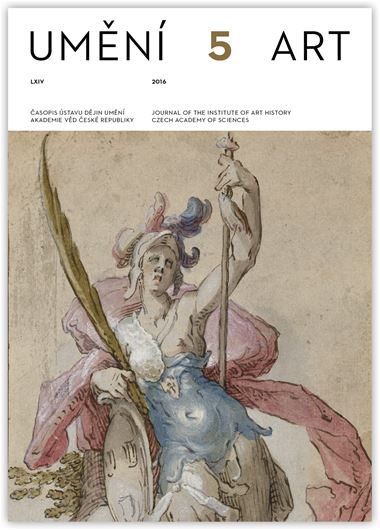Veronika Rollová
„Stvoření nového člověka“. Dům československých dětí na Pražském hradě v šedesátých letech 20. století
In 1959 the Ideological Council for the Renovation of Prague Castle was established. Antonín Novotný was appointed President of the Council, the function of which was to manage every the renovations of the official residence and office of the President and the location where the Czechoslovak Communist Party held its meetings. The council’s grand plans also included the construction of a scenic walk that was to be called Avenue of Socialism (Alej socialismu) linking Hradčany to Letná Plain, and on the grounds of Prague Castle to open the Monument to the History of the Czechoslovak People. The renovations were supposed to transform Prague Castle into a monument that would forever serve as a reminder of the milestone Czechoslovakia had reached in its history, having established socialism and, as the new Constitution of 1960 declared, started on the path to communism. The official residence was meant to become a symbol so closely associated with the socialist state that it would appear inseparable from it in the eyes of the people. All the quintessential values of Czechoslovak state socialism were to be represented in one place: the joy of work and socialist patriotism, a sense of history, and the nurturing of artistic culture. Only a fraction of the projects approved were ever completed. The first of these was House of Czechoslovak Children. The reason why this project was successfully brought to life was that it focused on young people, and they were envisioned as playing a central role in the country’s future development. The House of Czechoslovak Children was meant have a hand of creating the new communist person. In the mid-1950s the formal principles of modernism began returning to official art and dressed up propaganda in a more appealing, relatively progressive guise. Its objectives, nevertheless, remained the same as they had been to that time. The House of Czechoslovak Children was a building that was meant to have an effect on all the senses of its visitors. Children here were looked on as the workers of the future and were to be guided towards becoming responsible citizens. Despite these ideological objectives in most cases the artistic decoration avoided having a straightforward propagandistic effect on young visitors.
Full-text in the Digital Library of the Czech Academy of Sciences:
https://kramerius.lib.cas.cz/uuid/uuid:7920347b-1e32-433d-88c1-ea22921bbfcb
< back

